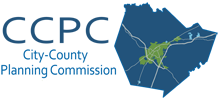In our world today, there seems to be a societal trend for walkable places, painted bike lanes, and community-driven development. In the planning world, we’re seeing global trends for communities to create places and spaces that encourage people to be outside and provide safe mediums for walking and biking. And we think it’s more than just the latest trend.
Bicycling is one of the fastest growing types of outdoor recreational sports nationwide. The 2017 Outdoor Industry Association Report estimated that 48 million people bicycle recreationally per year, contributing $96.7 billion per year to the economy. The outdoor recreation industry as a whole contributed $412 billion (2.2 percent) of total U.S. Gross Domestic Product in 2016, according to the 2018 report released by the Bureau of Economic Analysis (BEA). For comparison, agriculture accounted for 1 percent of the economy in 2016 and mining accounted for 1.4 percent. While these numbers represent the populations who use two-wheels recreationally and thus contribute to the national and local GDP, there are also the populations who bicycle because it’s their only mode of transportation.
Adventure Cycling and a number of other resources argue that bike tourism (building bike infrastructure for bicyclists to travel to a place, ride, and spend money) is on the rise and a great way to bring economic development, revitalization, and even community pride to both rural and urban areas. More research supports that bike-ped infrastructure that provides a safe place for people of all ages, skills, and socioeconomic class to walk and/or cycle encourages more healthy lifestyles (both physically and mentally). Those are just a few and all great reasons to work towards more walkable and bike-friendly cities!
Locally, Cave Country Trails worked diligently to dream up, ride roads, draft the route and documentation, and finally seek approval by state and national organizations of a U.S. Bicycle Route (USBR) connecting the Cave Region of Kentucky to the Tennessee border. It provides connections to Mammoth Cave National Park and various small towns (including Oakland and Smiths Grove) along the 109-mile route. In fact, with this recent approval of USBR 23, Kentucky now ranks fifth overall for most miles in the national bike network, with a total of 856 miles statewide. View USBR 23 here.
On a smaller scale, BikeWalkBG, the local bike-ped advisory, advocacy, and education initiative, is working to promote biking and walking through the production of safety and educational materials and community events. Later this month, we’ll be releasing a Bike BG map, identifying the safety and comfort level of roads to ride in Bowling Green, in addition to the identification of all greenway facilities. You can also look for us at #BGGov2Go events this summer and on Facebook/Instagram at @bikewalkbg – don’t miss out on opportunities to learn more and get involved!

